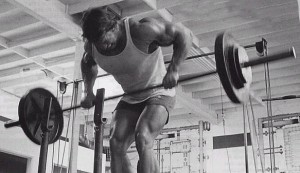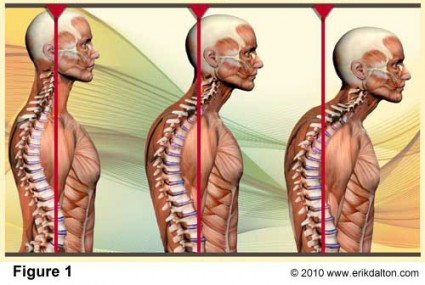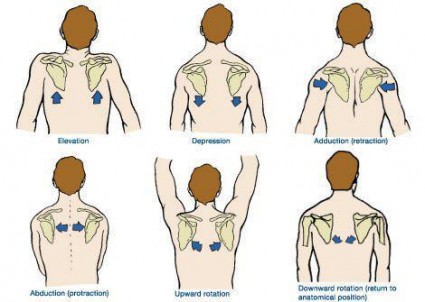Hard truth: We NEED, as in MUST HAVE to function, more rows in our workouts.
Too much of these things:
- Pushing
- Sitting
- Desk Work
- Bad Posture
Have left us with Desk Jockey Syndrome.
One major component of which is a weak back, especially in the pulling muscles.
Muscles like the Lats, Rhomboids, Posterior Delts, and Lower Traps that just are not doing what they are supposed to do, or at least not to the level they are supposed to do it.
How do we start to fix this?
SCAPULAR RETRACTION and SCAPULAR DEPRESSION…..ie. pulling the shoulder blades back and down.
What exercises are great at facilitating both scapular retraction and depression?
Rows….rows and more rows..
How to Row:
- Set up with a neutral spine.
- Get good Thoracic Extension…“logo” or nipples up posture….NOT CHIN!!!!
- Don’t over-arch the lower back.
- Pull the shoulders down and back and stick the chest out.
- Crush the Handles, NEVER “hang” on the weights, smash the handles.
- Drive the elbows back.
- Pull the hands through the ribs.
- NEVER bend the wrists.
- Keep the elbows close to the body.
- Finish “BIG” don’t round over at the top.
This is Good: Chest up, shoulders back, neutral spine.
This is Bad: Chest rounded, shoulders coming forward, rounded low back
Row Progressions: Most people come to me with bad posture, pulled forward a weak back and not a lot of skill and motor patterning (understanding) for rowing movements.
That means we have to progress rows not just in terms of adding more weight to the bar or reps to the set but also in the number of contact points. ie.
The fewer the contact points the more difficult the exercise. <—-in terms of motor (body) control, not necessarily intensity of the exercise.
First Progression:
Four Points of Contact (Both hands and Feet): Inverted Rows and TRX rows
Inverted Rows on the Smith Machine or in a Rack are the easiest rows to learn and do correctly, this doesn’t necessarily mean they are easy to perform.
As you improve lower the angle and to make this really challenging put the feet up on a box or a bench.
Truth be told I start most people out with TRX rows because of the freedom of movement in the handles. I can start them at an easy angle and get them used to ending with a neutral wrist at the end position.
That said, theoretically, the TRX version should be the more difficult version because of the instability of the handles.
Maybe the best row variation: TRX row with the feet up. It’s super challenging and useful yet “simple” not “easy” to perform.
Three Points of Contact (Both feet and the chest): Once someone can retract the scapula, which at this point is actually “pushing the chest out”, with their hands supported we move to a position where they are supported so they get LOTS of biofeedback from the chest being on the bench, but the hands are in an “open-chain” environment and the trainee has to control the dumbbells.
Chest Supported Incline Row:
This exercise is also great at teaching “ribs down” but “logo” or “nipples up” (thoracic extension) posture. If we focus on never leaning back (arching the low back) to complete the movement but instead pinching hard.
Two points of Contact Supported (Hand and knee): After we’ve mastered pinching the shoulder blades (retraction), keeping the shoulders packed down (depression), maintaining thoracic extension (logo up) while minimizing lumbar extension ((minimal low back arch) we can take away a point of contact (the chest) and move to the typical dumbbell row.
Dumbbell Row:
Yes, the toe is on the bench, but the reality is that toe isn’t doing much, the points of contact that are supporting the movement are the knee and the hand.
Tip: Make sure you set up with your grounded foot far enough away from the bench that the hips can remain relatively flat.
This version is actually pretty technical and takes quite a bit of strength to maintain a chest up posture with the shoulders “packed and back” throughout the movement.
Two Points of Contact Un-Supported (Feet):
Barbell Row:
These are BY FAR the most difficult type of row to get right and there are 100 different variations and internet warriors will endlessly debate which is best.
- Pendlay Rows: Torso completely parallel with dead stop at the bottom.
- Yates Rows: Torso at 45 degrees and elbows and hands get pulled more through the waist or just above it.
As long as you’re not getting a lot of “extra” movement and your torso is relatively stable I don’t think it actually matters.
Christian Thibaudeau gives a nice simple tutorial here.
The biggest problem with these (and why I don’t use them very much myself anymore) is that they will SMOKE your lower back, hamstrings and core.
If any of these are already tired from anything else or you need to use the them in a subsequent workout you MUST be smart about using barbell rows or you could find yourself in trouble quick.
Other Things:
There are Lots of other rows and row variations out there:
- Face Pulls
- Seated Row
- One Arm Cable Row
- Half Kneeling One Arm Row
- Batwing Rows
- Real Row
and on and on and on…..they’re all good to go but like anything all have different strengths and weaknesses.
Most people should program twice as much pulling into their programs as pushing. If you’re really weak, and locked short at the pecs and loose in the lats it might be more like 3 to 1 pulling to pushing volume.
The TRX is worth the price if for no other reason than it is the ULTIMATE row “machine”. With about 2 seconds of coaching people become excellent at this movement 9 out of 10 times. Literally EVERY client I train at the gym or their home does some type of row on the TRX.
How NOT to Row:





